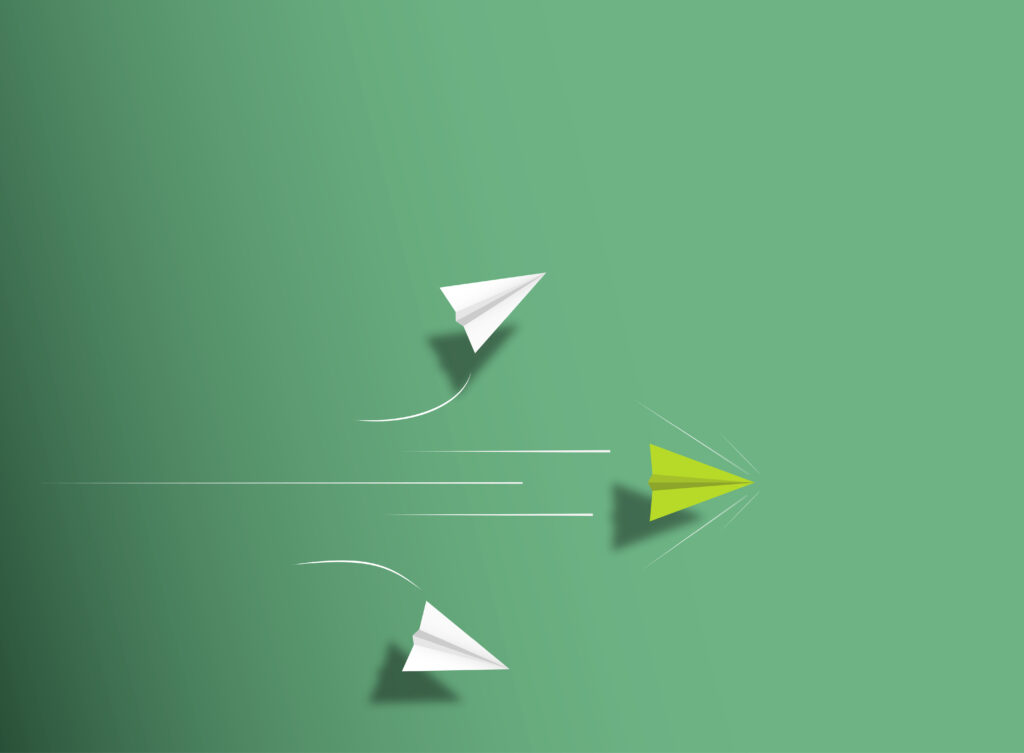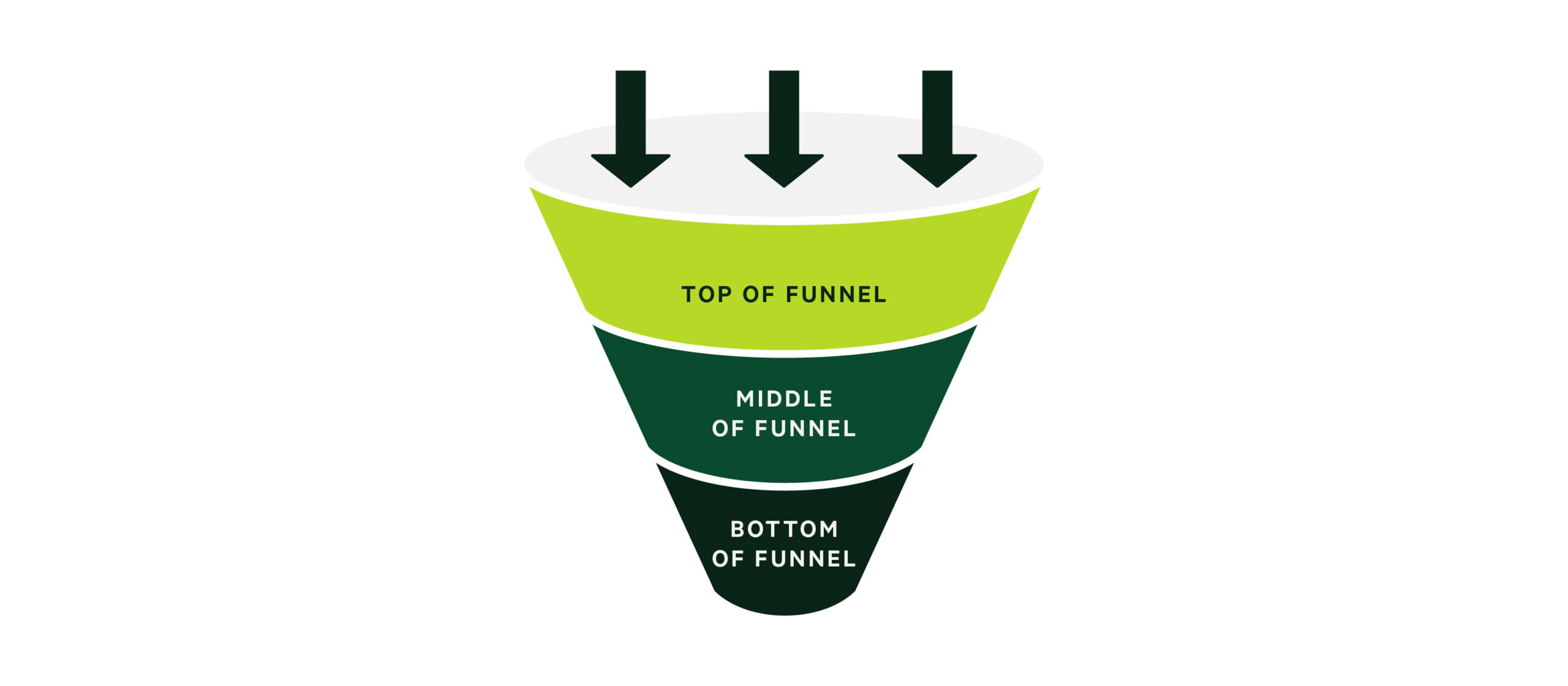When it comes to generating pipeline, content reigns supreme (I’m biased, but stick with me). Well-crafted content is one of the best ways to move a buyer closer to that magical “Aha!” moment, and for buyers, finding the right content at the right point in their research can feel like magic. Being inundated with the wrong information, though? There’s no faster way to encourage your buyers to find the exit.
With 70% of B2B buyers sourcing content directly from a vendor’s website, neglecting your content strategy is a costly choice. Before you panic, aligning your content with the customer journey doesn’t have to mean endless hours of content creation for your team.
While it may be tempting to publish a few blogs and consider this checked off the to-do list, we encourage you to think bigger. If you’re up against ambitious pipeline goals, you need a full-funnel sales content strategy.
How a Full-Funnel Sales Content Strategy Powers Pipeline
Spend time around a marketer and you’ve likely heard us preaching the importance of serving the right content to the right buyer at the right time, but what does that actually look like? In its simplest form, that means both sellers and marketers meeting buyers with content that preemptively answers their questions and leaves them wanting a little more. Practically speaking, it looks like this:
Awareness Stage: Educational and Thought Leadership Content Outlining Your Buyer’s Pain Points
For buyers in the awareness stage, educational and thought leadership content is what it’s all about. Content in this phase encourages buyers to begin naming their problems in more concrete terms than before, leading to more informed interactions with sales reps down the line.
Awareness content takes many forms, including
- News and industry POVs
- Benchmarks
- Blog posts
- How-to guides
- Peer validation (case studies)
Sales reps armed with this content can facilitate conversations through automated cadences, social media outreach, and more. While awareness content is often used in “always-on” marketing campaigns, this top-of-funnel content can also be adapted for timely news releases. A blog post or industry POV offers sales reps an opportunity to position themselves as thought leaders, outlining impacts on the industry and steps to get ahead of the competition.
How-to guides are also particularly powerful in the awareness stage, as buyers are often beginning to think about their problems in more concrete ways. These guides also create an opportunity to encourage buyers to consider an industry-wide challenge from your company’s perspective, offering an invaluable opportunity to shape how buyers view challenges and potential solutions.
With 62% of B2B buyers engaging with 3-7 pieces of content before contacting sales, it’s easy to see how influential awareness stage content is in setting the tone for sales conversations that follow.
Consideration Stage: Driving Engagement and Mapping Solutions
Content in the consideration stage articulates how your solution solves the challenges identified during the awareness phase, and ideally, keeps buyers coming back for more. At this point of your sales content strategy, the goal is to engage potential buyers with deeper topical content like white papers, assessment quizzes, and vendor comparisons.
Content in the consideration stage includes:
- Infographics
- White papers
- Videos
- Playbooks
- Assessment quizzes
- Vendor comparisons
Consideration content is effectively used by sellers in nurture campaigns and email cadences, as well as in direct marketing outreach campaigns. It’s clear research-driven content resonates with B2B buyers, with 67% saying they would spend 5-30 minutes reviewing an infographic. Data-focused content was also found to be more likely to be amplified across the buying committee.
Unlike always-on awareness campaigns, mid-funnel consideration content is best deployed in quarterly campaign cycles. For marketers, content in this phase opens up new opportunities to experiment with gating content and different styles of content. Don’t forget to test and optimize based on initial campaign results!
Decision Stage: Creating Content that Converts
In the decision stage, content is crucial as buyers work to determine if a vendor is right for them. These larger, bottom-funnel content pieces are typically tied to broad lead generation campaigns and are designed to ultimately convert prospects into buyers.
Decision-stage content can look like:
- Annual/quarterly reports
- Trends/research papers
- Industry insights
- Case studies
- Pricing calculators
- ROI assessments
Decision-stage content also creates an opportunity to elevate your credibility within your industry, by establishing your brand as synonymous with benchmarking and deep-dive research. If you’re already watching trends, consider capitalizing by formalizing an annual survey and incorporating original insights into an upcoming content piece. It’s an excellent opportunity to engage with key clients and prospects across the industry while gathering data your competitors won’t have.
Leveraging interactive content like ROI assessments or undertaking an annual survey further empowers your team with additional information about a prospect’s unique situation. Reps can then tailor conversations and recommendations to meet the ever-rising standard of personalized service B2B customers have grown accustomed to in a B2C world.
Doing More With Less (Content): Strategies for Repurposing Existing Assets
The good news is you don’t need a brand new team, shiny tools, or an agency partner to get started (drop us a line if you want to chat, though!). All you need to do is get scrappy with your existing content to create a sales content strategy.
Deconstructing larger content pieces into microassets
Step 1: Identify your larger content assets – things like eBooks, whitepapers, webinar decks, annual sales/marketing presentations, conference decks, etc. Consider topics that resonate with your audience and narratives that have previously worked well as you narrow down your theme and audience.
Step 2: Determine your ideal content type. Would a series of posts leading to a larger, gated article be most useful for your team? Maybe it’s an infographic highlighting relevant statistics from a recent presentation, with a link driving back to a webinar registration on your site. Either way, spend time thinking about why your target audience would be interested in what you’re offering.
Step 3: Draft your content, incorporating relevant material from the larger content piece. Don’t forget to connect it to your overarching narrative, and include CTAs guiding a reader toward the next action.
Repurposing smaller content assets into larger, gated content pieces for lead generation
Step 1: Once you’ve identified your topic and audience, gather all the topically-related materials. If you only have a couple of content pieces to start, that’s ok! If you have less than two pieces of content, it’s worth considering why you’re pursuing the topic. Is it thematically aligned with your business objectives? Will this help you meet your KPIs? If not, head back to the top of Step 1 and begin again.
Step 2: Determine the ideal content type. Is it repurposing a related blog, customer success deck, and pitch deck into a one-pager you can share with prospects? Maybe you want to revamp those materials into a more formal case study to meet lower funnel, decision-stage needs and accelerate pipeline. Either way, you get to chart your own course!
Step 3: Draft your content, incorporating relevant sections from related materials, and connect it to your overarching narrative. Don’t forget to include CTAs guiding the reader to the next step.
Measure and optimize, always
After you publish and promote you content, it’s time to measure results. Ideally, you’ll be able to track results back to influenced pipeline. If you’re still building out your measurement framework and haven’t perfected your attribution, you may look to engagement metrics to gauge early success. Either way, gather feedback and data on what performs best so you can improve your sales content strategy.
From repurposing your existing sales and marketing content to reimagining your approach to content that converts, realigning content to the customer journey is one initiative guaranteed to impact pipeline.



